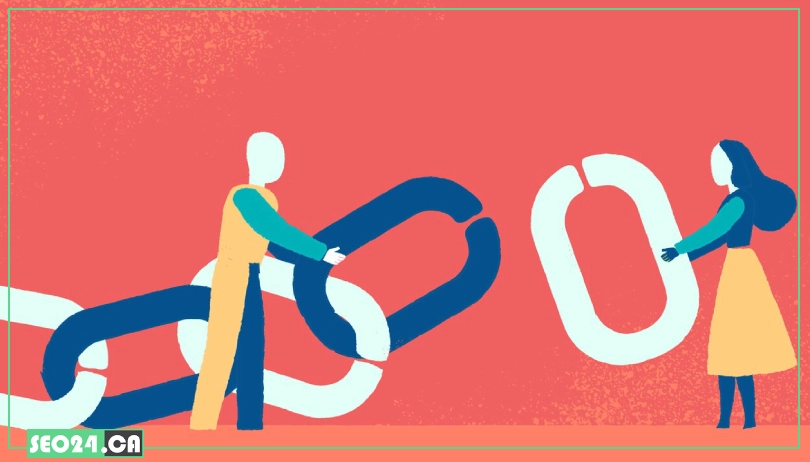
Internal linking
Table of Contents
What is internal linking in SEO?
Internal linking refers to the practice of linking one page or piece of content on your website to another page within the same domain. These links help users navigate your site more easily, while also guiding search engines to understand the structure and hierarchy of your content. Internal links are crucial for distributing link equity (the value passed from one page to another) throughout your site, allowing important pages to gain more visibility and ranking potential.
Why Internal Linking Matters for SEO?
Internal linking is not just about making your website easier to navigate; it’s also a powerful SEO tool that can significantly improve your site’s search engine rankings. When done correctly, internal linking boosts crawlability, enhances user experience, and helps distribute link equity across your pages. Let’s explore how this simple yet effective strategy can make a big impact on your SEO efforts.
Improved Website Navigation and User Experience
Internal links play a crucial role in enhancing user experience by making it easier for visitors to navigate your website. When users can easily find relevant content through intuitive links, they’re more likely to stay longer and explore more pages. A smooth navigation experience keeps users engaged, helping reduce bounce rates and improve overall site performance.
Enhanced Crawlability and Indexing
Search engines use internal links to crawl your website efficiently. By having a logical structure and well-organized internal linking, you guide search engine crawlers to discover and index your content more effectively. This ensures that important pages are indexed and can rank higher in search results, which is essential for SEO success.
Distribution of Link Equity (PageRank)
Internal linking helps distribute link equity, or PageRank, across your website. When a high-authority page links to other pages on your site, it passes some of its SEO value to those pages. This process helps to improve the ranking potential of other pages, boosting the overall SEO health of your site.
Contextual Relevance and Keyword Association
Internal links provide an opportunity to connect related content, improving the contextual relevance between pages. By linking to pages with similar topics or keywords, you reinforce the relationship between different pieces of content, helping search engines better understand the theme of each page. This also improves the chances of ranking for long-tail keywords associated with those topics.
Increased Time on Site and Reduced Bounce Rate
A strategic internal linking structure encourages users to explore more pages, increasing the time they spend on your website. The longer visitors stay on your site, the less likely they are to bounce off. This improved engagement signals to search engines that your content is valuable and relevant, which can positively impact your rankings.

Best Practices for Effective Internal Linking
To maximize the benefits of internal linking, it’s crucial to implement a strategy that’s both thoughtful and strategic. Internal links can boost SEO performance, enhance user experience, and make sure your content is easily discoverable by search engines. Below, we’ll dive into the best practices for creating an effective internal linking structure that will support your site’s growth and rankings.
Keep Links Relevant & Contextual
For internal links to be truly effective, they must be relevant to the content surrounding them. Linking to pages that are closely related to the topic at hand helps both users and search engines understand the connection between pieces of content. This also enhances the overall user experience by providing additional valuable information related to the current topic.
Use Descriptive, Keyword-Rich Anchor Text
Anchor text is the clickable text in a link, and it should clearly describe the content on the linked page. Using keyword-rich anchor text helps search engines understand the context of the link, and it improves your chances of ranking for those keywords. However, make sure the text is natural and relevant, avoiding keyword stuffing.
Prioritize Important Pages
When building your internal linking strategy, prioritize linking to your most important pages, such as high-converting landing pages or key product/service pages. By linking more frequently to these pages, you can help search engines identify them as more valuable, which could potentially improve their rankings.
Don’t Overdo It (Avoid Spammy Linking)
While internal links are crucial for SEO, overusing them can lead to a spammy user experience. Too many links on a page can overwhelm users and distract them from the main content. Keep the number of internal links reasonable and ensure they provide genuine value to your readers.
Link Deeply (Not Just Homepage & Top Pages)
While it’s common to link to your homepage or top-level pages, it’s also important to link to deeper, more specific pages within your site. Linking to product pages, blog posts, or category pages can help those pages get indexed more effectively, and it ensures your internal linking strategy covers a broader portion of your site.
Review and Audit Your Internal Links Regularly
As your website evolves, it’s essential to regularly review and audit your internal links. Broken links, outdated links, or irrelevant connections can negatively impact user experience and SEO performance. Periodically audit your links to ensure they are still valuable and functional.
Use a Logical Link Structure
A well-organized internal linking structure is key to making sure your site is easy to navigate for both users and search engines. Group related pages together logically, and create a clear, hierarchical structure that shows how your content is connected. This improves the crawlability of your site and makes it easier for search engines to index your content.
Use Internal Linking Plugins (Optional)
If you’re using platforms like WordPress, internal linking plugins can help automate the process and suggest relevant internal links. While plugins can be helpful, always make sure the links they generate are contextually appropriate and serve the user’s needs. They shouldn’t replace manual effort or careful strategic planning.
📖 Read more: How to Tell If a Link Is Dofollow or Nofollow?
Examples of Effective Internal Linking
Effective internal linking strategies can significantly improve both SEO and user experience. By strategically linking relevant pages within your website, you can enhance crawlability, distribute link equity, and help users find the most valuable content on your site. Let’s look at some examples of how internal linking can be used to maximize its benefits for SEO:
- Blog Posts Linking to Related Content: Link blog posts to other related articles on your website. For example, a post about “SEO Tips for Beginners” can link to an article on “Advanced SEO Techniques” to keep users engaged and provide deeper insights.
- Linking from Product Pages to Reviews and Testimonials: On product pages, link to customer reviews or testimonials. This builds trust and improves SEO by adding relevant, user-generated content to the product page.
- Service Pages Linking to Case Studies or Success Stories: Link service pages to case studies or success stories that demonstrate your expertise. For example, a “SEO Services” page could link to a case study showcasing client results.
- Category Pages Linking to Relevant Blog Posts: On category pages, link to related blog posts or product pages. For example, a “Marketing Services” category could link to articles on “Social Media Marketing” or “SEO Services.”
- Navigational Links in the Footer: Use the footer to include links to essential pages like “About Us,” “Contact,” or “Privacy Policy.” This helps users find important information and boosts the SEO of these key pages.
- Linking to Evergreen Content: Link to evergreen content, such as how-to guides or tutorials, from relevant pages. For instance, a blog post about “Digital Marketing Strategies” can link to a detailed “SEO Best Practices” guide, ensuring timeless content gets more exposure.
How to Find Internal Linking Opportunities?
By identifying where you can add relevant internal links, you can boost your SEO, improve user experience, and drive traffic to your important pages. Here are some effective ways to identify internal linking opportunities on your site:
- Audit Existing Content – Review your current content to find gaps where internal links can be added. This ensures that all your articles, product pages, and other resources are interconnected, making it easier for both users and search engines to navigate your site.
- Identify Orphan Pages – Orphan pages are those that don’t have any internal links pointing to them. Use SEO tools to locate these pages, and then add links to them from relevant content across your website. This helps search engines crawl and index these pages and improves their visibility.
- Use Pillar-Cluster Model – The pillar-cluster model involves grouping related content together. A pillar page covers a broad topic, and cluster pages provide in-depth information on subtopics. Linking cluster pages to the pillar page and vice versa strengthens SEO and keeps users engaged by offering a clear content hierarchy.
- Link Blog Posts to Pillar Pages – Ensure that your blog posts are connected to relevant pillar pages. This improves the SEO of both the blog post and the pillar page while guiding users through related content and offering a more comprehensive experience.
- Add Links in New Content – When creating new content, incorporate links to older posts, product pages, or resources. This keeps your site well-connected and ensures that fresh content also brings attention to older, evergreen material, benefiting your SEO and user engagement.
💡If you’re looking to create high-quality, engaging content that drives traffic and encourages internal linking, our content writing services Toronto can help..
Common Internal Linking Mistakes to Avoid
While internal linking is crucial for SEO, it’s easy to make mistakes that can hurt your site’s performance. Here are some common pitfalls to avoid when setting up internal links:
- Overlinking or Spamming Links: Adding too many internal links on a page can appear spammy and hurt the user experience. It’s important to link only to relevant pages and avoid excessive links that could distract users or dilute the page’s value.
- Using Generic Anchor Text: Avoid using generic terms like “click here” for your anchor text. Instead, use descriptive, keyword-rich anchor text that gives users and search engines a clear idea of what the linked page is about.
- Linking to Irrelevant Pages: Make sure the internal links you add are contextually relevant to the content on the page. Irrelevant links can confuse users and search engines, ultimately hurting your site’s SEO and user experience.
- Neglecting Orphan Pages: Orphan pages are pages that don’t have any internal links pointing to them. If you don’t link to these pages, they may go unnoticed by search engines and users. Ensure all pages have internal links for better crawlability and indexing.
- Not Updating Links Regularly: Internal links should be updated regularly, especially when you publish new content or change old pages. Failing to update links can result in broken or outdated links, which can negatively affect user experience and SEO.
- Ignoring Mobile Experience: Internal linking should also be optimized for mobile users. Ensure that links are easy to tap and navigate, as a poor mobile experience can harm both user engagement and rankings.
💡A skilled and experienced SEO team avoids common internal linking mistakes. Our team ensures a flawless internal linking strategy to boost your website’s SEO. For professional assistance, contact us at SEO in Toronto.
Tools to Analyze & Improve Internal Links
To effectively manage your internal linking strategy, using the right tools can help you analyze, optimize, and improve the structure of your site. Here are some tools that can assist in improving your internal links:
- Google Search Console – Google Search Console provides valuable insights into your website’s performance, including the internal linking structure. You can use it to see which pages are linked the most and identify any crawl errors that could impact your site’s internal linking.
- Screaming Frog SEO Spider – This tool crawls your entire website and helps identify internal linking opportunities and issues, such as broken links, orphan pages, or pages with poor link equity. Screaming Frog also allows you to visualize the structure of your internal links, making it easier to optimize.
- Ahrefs – Ahrefs offers an internal link analysis feature that allows you to examine your website’s link structure. It helps you find pages with few internal links and provides suggestions for improving link distribution. Ahrefs also highlights broken links, which can help with fixing issues related to internal linking.
- SEMrush – SEMrush provides an internal linking audit tool that assesses your website’s link structure and identifies any opportunities for improvement. It also highlights pages with low internal link counts, making it easier to ensure all important pages are well-linked.
- Sitebulb – Sitebulb is another powerful site auditing tool that provides a visual representation of your internal link structure. It allows you to analyze internal link distribution, find orphan pages, and identify pages with weak link equity. Sitebulb also provides insights into how internal linking impacts your website’s SEO performance.
- Internal Link Juicer (WordPress Plugin) – If you’re using WordPress, Internal Link Juicer is a great plugin for automating the process of adding internal links to your posts and pages. It suggests relevant links based on keywords and helps improve the structure of your content with minimal manual effort.
- Link Whisper – Another WordPress plugin, Link Whisper helps you find and insert internal links within your content. It offers automated link suggestions based on your keywords and content, helping you improve your internal linking strategy without spending excessive time.
Conclusion
Internal linking is a crucial aspect of SEO that not only helps search engines crawl and index your website more effectively but also enhances user experience by guiding visitors to relevant content. By following best practices such as keeping links contextual, using descriptive anchor text, and regularly auditing your internal links, you can improve your site’s SEO performance and overall usability.
💡For a well-executed internal linking strategy, you can rely on the expertise of our team. As a leading digital marketing agency in Toronto, we offer comprehensive solutions to optimize your website and help you achieve your business goals.
Related Posts
Learn what SEO is and why it's crucial for your business. Find out how optimizing your website can boost…
by
Having a great website is just the first step. To get people to visit it, they need to be…
by
As voice search becomes more popular, it's clear that people are changing how they look for information online. Users…
by
With the rise of zero-click searches, ranking at the top of Google's search results has taken on a new…
by


